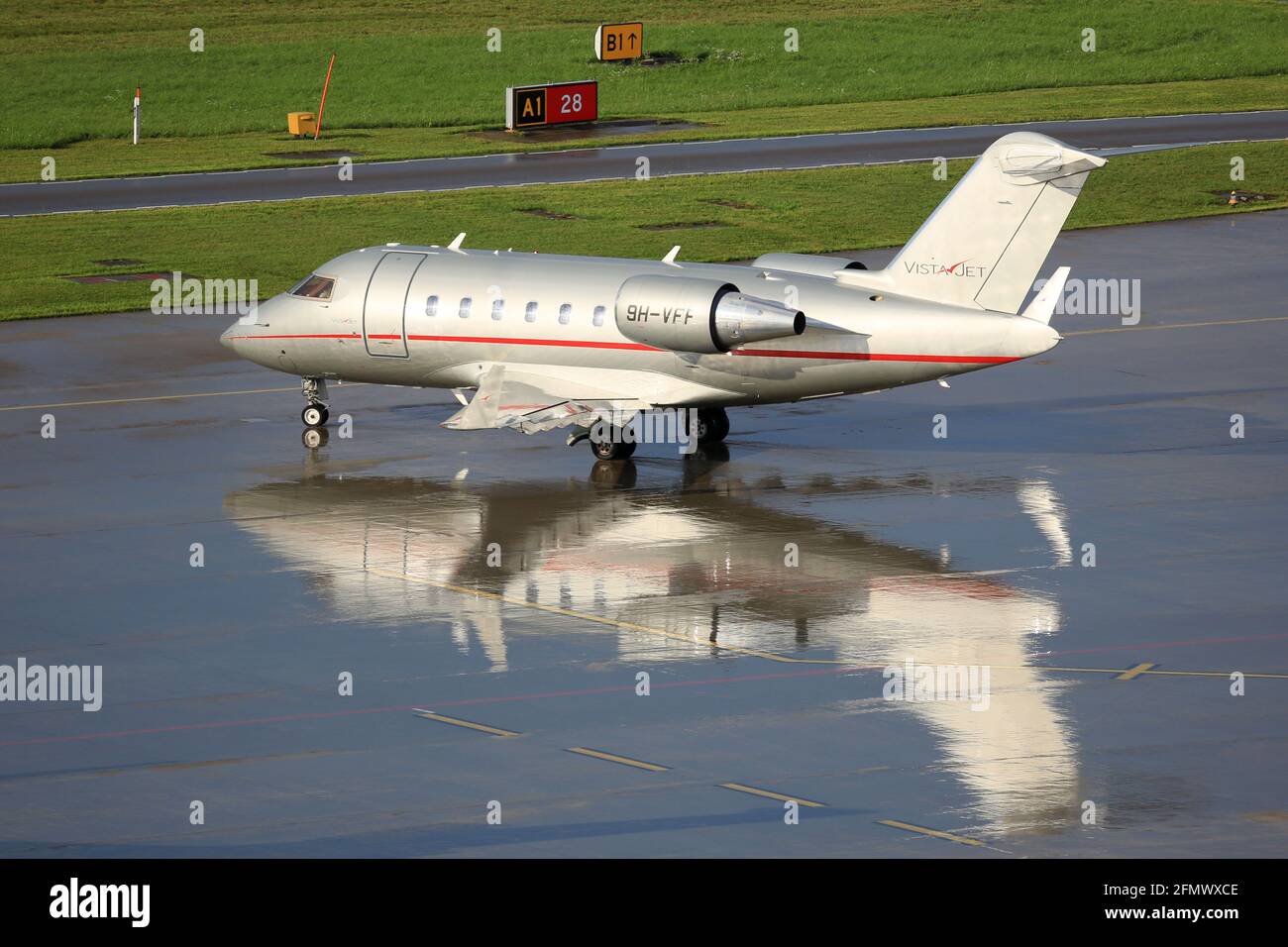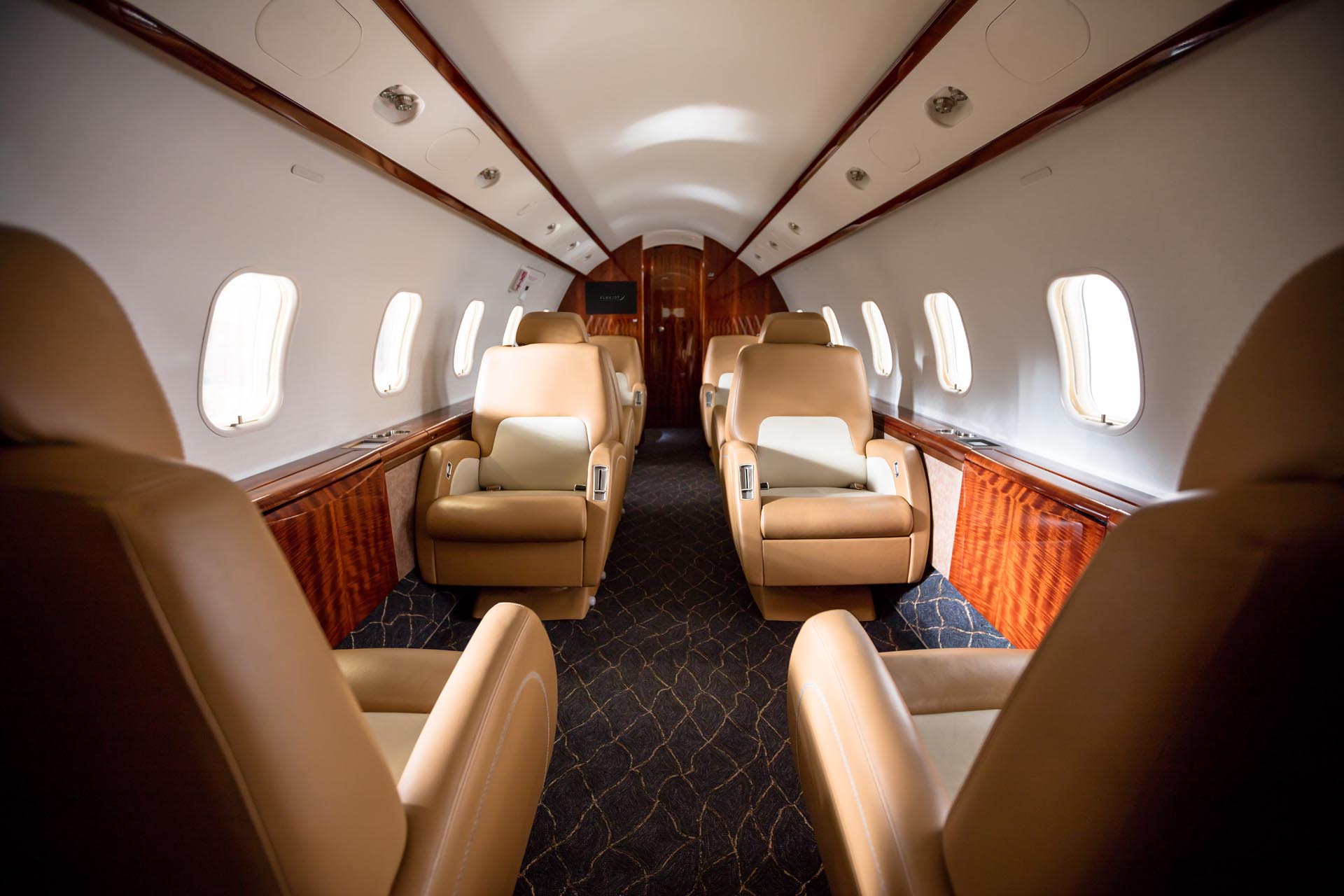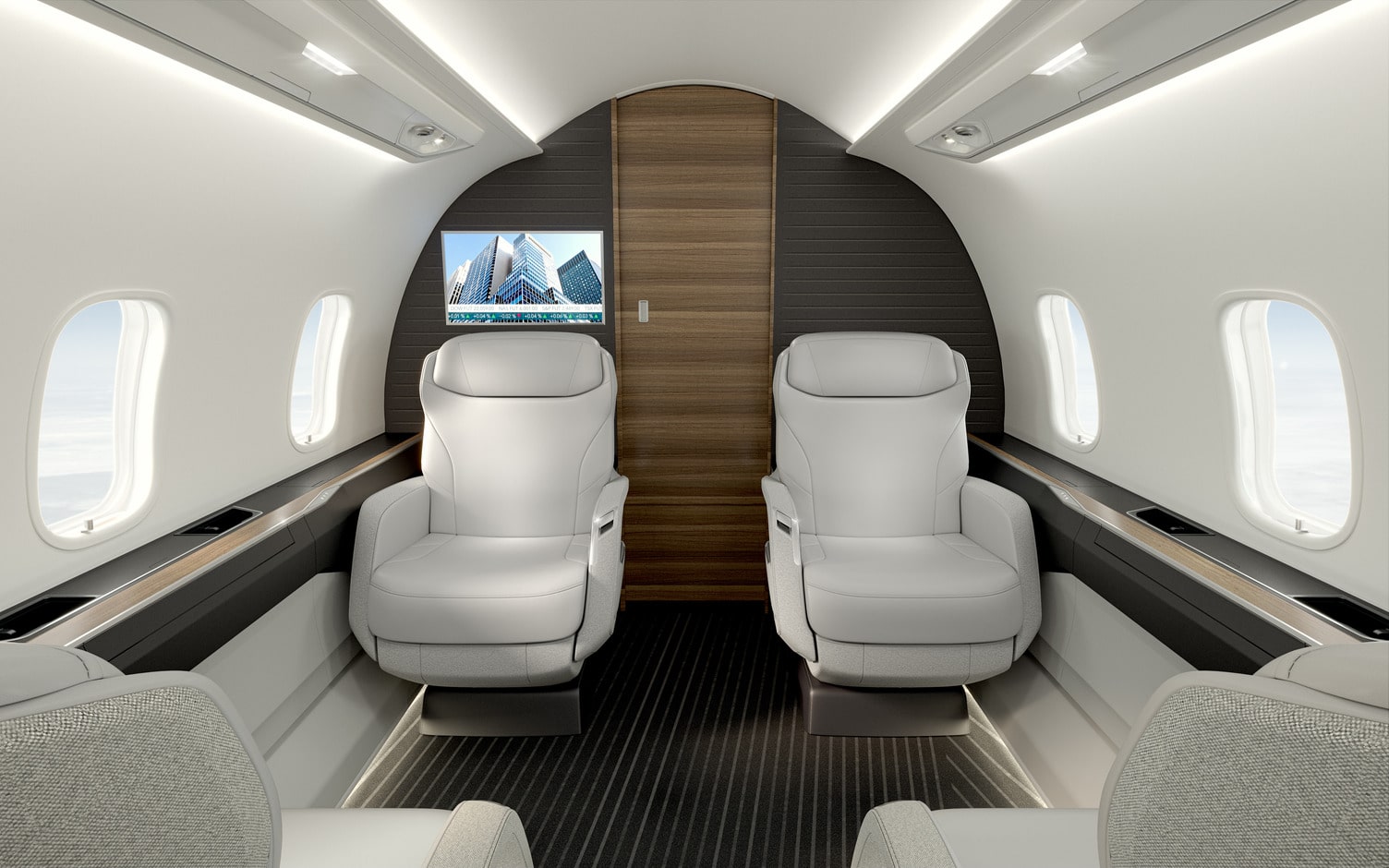Challenger Aircraft - The Bombardier Challenger 600 series is a family of commercial aircraft developed by Canadair after the vision of Bill Lear, and produced by its new owner, Bombardier Aerospace, since 1986. In 1975, Canadair began supporting the development of the LearStar. 600, and purchased a wide-body commercial aircraft model in April 1976. On October 29, the program was launched, supported by the Canadian federal government, and designed to comply with the new FAR part 25 regulations.
In March 1977, the Challenger 600 was dismantled after Bill Lear was removed, and the original tail was changed to a T-tail among other improvements. The first prototype was released on 25 May 1978, and made its first flight on 8 November. The flight test program saw a fatal accident on 3 April 1980, but Transport Canada approved the certification of the CL-600 on 10 August 1980.
Challenger Aircraft

In 1986, Canadair was close to bankruptcy and was bought by Bombardier. The aircraft was later expanded to the jetliner Bombardier CRJ, launched on 19 October 1992, and the long-haul Global Express, launched in July 1999. The 500th Challenger was launched in May 2000, and the 1000th NetJets in December 2015. As of October 2018, 1,066 aircraft have been built.
Bombardier Challenger 300
The Challenger is a light aircraft powered by two turbofans mounted in fuselage boxes, with a large wing and a two-seat cabin. The original Lycoming ALF 502 turbofans were replaced by two General Electric CF34s on the CL-601, which also received wings, and began flying on 10 April 1982. Subsequent variants revised the structure, aircraft, and larger dimensions.
In 1974, American aviation inventor Bill Lear created the LearStar 600, a low-powered, long-range business jet powered by two Garrett TFE731-1 turbofans and equipped with real wings.
Lear did not have the ability to launch such an aircraft, so he sought out partners to manufacture and sell it, including the Canadian aerospace company Canadair. According to authors Ron Picklet and Larry Milberry, Canadair's top management was of the opinion that Lear's idea was the best design.
Lear had no knowledge of aeronautical architecture; So far, he has only been able to pay an American aerospace consultant to conduct preliminary design studies.
Next Gen Private Jet Challenger 3500 Breaks The Norm With Unprecedented Features
After research, comparing the Learstar system with competitors such as the Lockheed Jetstar, the Dassault Falcon 50, and the Grumman Gulfstream II, Canadair decided to support its idea around the year 1975.
According to aviation industry magazine Flight International, many Canadians see the program as a step toward developing a private, high-tech aviation industry that will compete on a global level.
Perhaps the most important thing is that the Canadian government wants Canadair to be independent, so the company wants to reduce the number of contracts with other companies, such as Dassault Aviation of France and Boeing of the United States, or provide packages to support the aircraft. what is there. They have already discontinued products, such as the CF-5 fighter. Canadair saw fit to prove its ability to develop advanced basic technology at this time.

Canadair intends to use Lear's name and its development skills to secure a commercial airline loan from the Canadian federal government.
Bombardier Challenger 300 For Sale
This proved a good choice: the future Prime Minister Jean Chréti directly refers to the influence of personal contact with Lear in his decision to provide financial assistance to the Canadair project.
During these transitions, Chréti continued to chair the Treasury Board, Minister of Industry, Trade, and Commerce, and Minister of Finance, in the Canadian government. Thanks to the use of condolence letters, strong financial obligations of the service to Canadair can be maintained in parliament and in the public for many years.
These loans were later used as an academic example of the mismanagement and control of government subsidies to industry.
In April 1976, Canadair received the LearStar 600 concept. It was a 63 ft (19 m) long and 53.3 ft (16.2 m) wide aircraft capable of a maximum speed of Mach 0.85 and a range of 7, 240 km (3,910). i am); as a top flight, it has enough capacity for 14 passengers; in cargo configuration, it has a payload capacity of 3,400 kg (7,500 lb), loaded and unloaded through the front door, or as an airliner, it can seat 30 passengers in a 2-1 seating configuration.
Bombardier Challenger 600 Series
Canadair upgraded the design to a larger airfield featuring a new dynamic wing design, new aircraft and architecture, and compliance with the new 25% FAR regulations. wind tunnel.
Supported by the federal government, the program began on October 29, 1976 with a firm order and maintenance of 53 aircraft.
Various changes were made to the original Learstar system in preparation for launch, such as the replacement of the tailplane with an accompanying T-tail after it was found that the former was causing structural, displacement and fuel damage. maintaining the wings, and increasing the bulk of the main weight of the aircraft.

After disagreements over the direction of the show, Bill Lear was removed from the cast; Therefore, in March 1977, the aircraft was installed Challenger 600.
A Freeware Bombardier Challenger 300 Is In Development For Msfs
After Lear's death in May 1978, Canadair paid nearly $25 million to his estate for his role in the program.
Due to the development of the design, the original power design became unstable; Therefore, the construction industry Lycoming proposed the construction of a new model, Lycoming ALF 502L, the design team of Canadair agreed with the main Challger, and where he created the gerralmt arrangement.
The open door of this type was designed in response to the needs of FedEx, the first customer of this type, after ordering 25 planes.
Additionally, FedEx had problems with the General Electric CF34 engines, and chose the Lycoming ALF 502D, instead; which later had delivery problems and malfunctions.
Canada Refreshes Its Multi Role Challenger Fleet
FedEx has reportedly shifted most of its orders to the Challenger version, aiming to handle up to 12,500 lb of cargo at a time.
However, FedEx ultimately chose to cancel its order due to the US airline ban, and some pre-built aircraft were sold to other customers, instead.
In the spring of 1977, Canadair received more than 70 orders and began building three models.

In addition, a loan of $70 million was taken from European countries to aid the program, which reduced the financial burden on the Canadian government.
Bombardier's Newest Challenger Jet Models Surpass Significant Delivery Milestones
A full mock-up was shown at the 1977 Paris Air Show before a tour of Europe and North America, and 106 were sold in 1977 d.
In late 1977, in the face of criticism that the project could not produce an aircraft that could fulfill the promises made, Canadair officials indicated that they expected the first flight of the aircraft to proceed the following year and the first delivery. began in September 1979. Flight International noted that even before the prototype's first flight, the type had already made a significant impact on the competition, including the introduction of the Cessna Citation III and the Grumman Gulfstream III.
By early March 1978, the first prototype was almost finished and assembly of the other two began;
Intended to control the control behavior and test the performance of the aircraft, it was launched on 25 May 1978, while 116 orders were confirmed 19 months after the first flight.
Bombardier Challenger 650 Model Airplane
At this point, production jigs have been set up that allow the production of up to sev Chalgers per month, ready for mass production to continue.
Airframe testing began in February 1979, and began cycling in December 1979, operating for 72,638 hours in February 1985, with a projected life of 30,000 hours.
On November 8, 1978, a model airplane took off on its first flight from Montreal, Quebec. The flight test and certification program was held at the Mojave Kern County Airport instead of Canada due to better weather.

The second and third types began flying in mid-1979. A reconnaissance flight on 3 April 1980 in the Mojave desert led to disaster; The aircraft crashed due to the failure of the release device containing the recovery unit after a deep dive, killing one of the pilots; the other test pilot and the construction test plane ejected to safety.
Bombardier Challenger 300 Super Midsize Aircraft
Early marketing of the Canadair model often contrasted the spacious cabin offered by the Challenger against its competitors, who tended to have smaller fuselages, therefore more extreme weather conditions, and better fuel economy. In 1982, with only 10 aircraft in service, the company began marketing a new model aircraft, the CL-601, which would be powered by General Electric CF34 turbofans instead of the original Lycoming model. units. On April 10, 1982, the CL-601 made its first flight.
According to Flight International, the decision to take the construction of the CF34
A&p aircraft mechanic, navy p 8 poseidon aircraft, p 8 patrol aircraft, p 8 maritime patrol aircraft, us navy p 8 aircraft, p 8 surveillance aircraft, navy p 8 aircraft, p aircraft, p-8 poseidon aircraft, aircraft a&p, p-8 aircraft, aircraft a&p schools

0 Comments